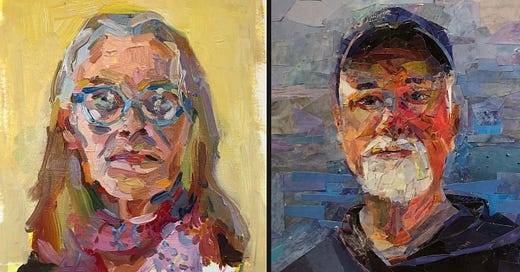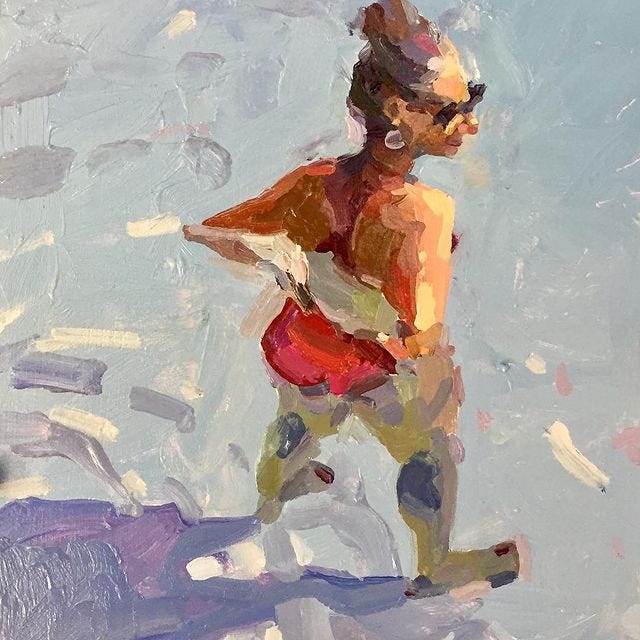Dear Readers,
Last Saturday morning, I sat down to breakfast and became absorbed in a front-page story in the Times: “Philosopher President, Near His End, on How to Be Truly Free.” It was about Pepe Mujica, the former president of Uruguay, who is now 89 and being treated for cancer in his esophagus. Reporter Jack Nicas traveled to Mujica’s home on a chrysanthemum farm near Montevideo to see how he was doing. Mujica is known for his plain-spoken rejection of consumerism, materialism, and the idiocies of modern life. “We waste a lot of time uselessly,” he said. “You’re free when you escape the law of necessity—when you spend the time of your life on what you desire. If your needs multiply, you spend your life covering those needs. . . . There is only one life and it ends. You have to give meaning to it. Fight for happiness, not just for wealth.”
Simple wisdom, understood down through the ages, but not so easy to practice. Mujica’s bluntness sat with me that day. “The contradiction of life is that it is a biological program designed to struggle to live. But from the moment the program starts, you are condemned to die.”
That afternoon, we got word that Alice’s oldest sister Amy had checked herself into the small hospital near her apartment in Vermont. She had severe pain in her back. Then we learned they wanted to send her to a bigger hospital in nearby Keene, New Hampshire. Alice’s other sister Nancy immediately drove up to Vermont and got her to Keene. We got a series of text messages with updates. We would need to make a quick trip to Vermont to get Amy’s little dog. By the time we were there, they decided to release Amy, with a strong supply of pain medication. Nancy would drive her down to our house.
At the apartment in Newfane, we gathered up a bunch of her laundry and a few essentials and threw them into a bag. Brought the dog back. Got Amy settled in. Amy’s daughter Emma sat by her bedside. But the medicine wasn’t reaching the pain. By three in the morning, Alice and Emma called an ambulance. They got her to Cooley-Dickinson hospital. On Sunday, they decided to send her to a bigger hospital in Springfield. Nobody understood what was happening. Had she had a heart attack? A stroke? Was there a blood clot? Tests, and more tests.
By Monday, Amy’s three adult children and stepdaughter were there, and her four siblings, and her mother, up from Long Island. By Monday afternoon she was on life support. And then by the end of the day she was gone.
Amy had just turned 70 this month. Only weeks ago we had a birthday party with her and she seemed as vital as ever. But about two weeks ago she had been diagnosed with a kind of leukemia. She was scheduled to have a bone marrow test on Monday. It now appears the leukemia kicked in and felled her in three excruciating days.
Emma wrote a loving and lovely tribute:
We like to assume longevity can run in the family. Amy’s grandmother lived to be 102. Amy’s mother is still going strong at 95. Suddenly it seems as if Amy was robbed of her final 20 or 30 years. But, of course, there is no such promise. I always thought my own mother, who lived a healthy and spiritual life, would live well into old age, but she died of ovarian cancer short of her 74th birthday. “But of that day and hour, no one knows, not even the angels in heaven. . .”
Almost two years ago, we saw Amy’s husband Tom meet a sudden end, as well. I remember him showing up in October, wearing his work overalls. He was 76, but he never stopped working; I mean, serious physical labor. He renovated houses and had all kinds of projects and plans. He didn’t even seem old. A few weeks later, he was in the hospital, and by the end of December his life was over.
I think about the stack of letters on Amy’s dining room table—she was going to send them out before the election, reminding people to get out and vote. I think of the load of laundry we did for her, the pair of shoes left behind from her final night with us. Her ample supply of coffee in the cupboard. All the work in progress in Amy’s studio. You always expect to have more time. But also, I think of how much she packed into those 70 years, a full life, with a body of artwork, social connections in all directions, and being a mother to three of the best people you could ever meet. She could sweep into your day like a hurricane sometimes, and at other times, more often, like the softest summer breeze.
She had been a beloved art teacher at a high school on Long Island; a mentor to younger teachers. She and Tom renovated a building in Greenport, NY, and ran it as the South Street Gallery. Recently, she had curated a show called “A Sense of Place” that opens in Greenport, on this day, Saturday, August 31. Her fellow artist, Kara Hoblin, and Amy’s youngest sister Kate talk about the show and about Amy’s work on this WLIW radio show. (The conversation about Amy starts at 21:00.)
You can see more of Amy’s own paintings on Instagram.
I happen to have picked up Atul Gawande’s excellent book, Being Mortal, a while ago. “The body’s decline creeps like a vine,” he writes. And as he describes the modern way of aging—a slow descent, often ending in a nursing home—it can fill a reader with dread.
It is not death that the very old tell me they fear. It is what happens short of death—losing their hearing, their memory, their best friends, their way of life. As Felix [Silverstone] put it to me, “Old age is a continuous series of losses.” Philip Roth put it more bitterly in his novel Everyman: “Old age is not a battle. Old age is a massacre.”
I remember how much my father dreaded being extracted from the house he’d been in for so many years. Finally, he took a spill and it was clear he needed care. He lived his final months in a facility—a decent one, fortunately. I remember him laboring to get into the car a few years ago after we went out to a restaurant. “Well, at least I’ve outlived my old man,” he said. His father had died in his early 80s, and here he was, at about 85 at the time, having bested that record. He made it almost to his 88th birthday.
Gawande writes that “It turns out that inheritance has surprisingly little influence on longevity.” He quotes a demographer who claims that only 3 percent of how long you’ll live is explained by your parents’ longevity, while about 90 percent of how tall you are is explained by your parents’ height. I know from my friend David Stipp’s book, The Youth Pill (2010), that it’s more complicated than that, and that there is also a good deal of research that points at the importance of genes, finding, for example, many centenarians who just happen to have extremely long-lived siblings.
Gawande notes that it’s only been in recent generations that 70 years has come to seem like an early age to die. When my grandparents were born, the average life expectancy was 50. “Remember,” he writes, “that for most of our hundred-thousand-year existence—all but the past couple hundred years—the average life span of human beings has been thirty years or less.”
But that was then, and this is now. As an epigraph for his book, David uses a quote from the anthropologist Ashley Montagu that captures how I feel about it: “The idea is to die young as late as possible.”
Several years ago I went to Austin to attend the celebration of The Texas Observer’s 50th year. The original editor, Ronnie Dugger, spoke. Ann Richards made a speech. Molly Ivins made a speech. And then at the end, in a moment I’ll never forget, Willie Nelson took the stage and broke into a rendition of “Funny How Time Slips Away.” Willie was 71 then—and thankfully is still with us today at 91. Ronnie is, too, at 93. But two years after that event, Ann died at 73, and the following year, Molly died at 62. I’m sure a great number of others who were there are also departed by now.
When the music started, people danced slowly in front of the stage. Some surely felt the full passage of that 50 years. “It’s been so long now,” Willie sang. “And it seems now that it was only yesterday. Gee, ain’t it funny how time slips away?”









So tender and moving. Much love.
Beautiful. In the zone. Thank you.